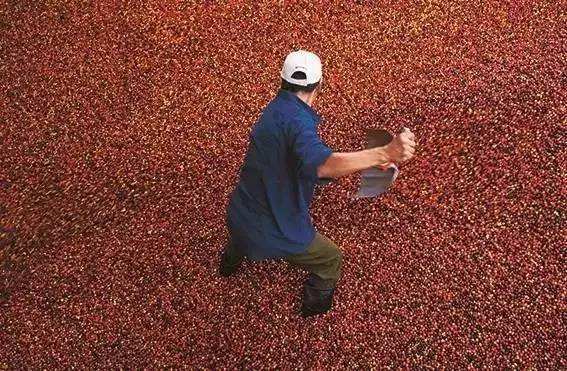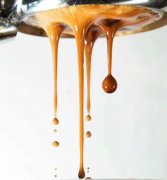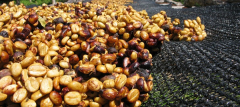Rwanda Coffee Red Bourbon Brazil Red Bourbon or Yellow Bourbon
For professional baristas, please follow the coffee workshop (Wechat official account cafe_style)
Luanda is located in the heart of the interior of Africa. Its fertile mountain terrain and ancient traditional bourbon species indicate that the natural environment needed to grow high-quality coffee beans can be seen everywhere in Luanda. Coffee was introduced to Luanda by German missionaries in 1904. Since it was the only income-earning crop for rural farmers in 1930, coffee cultivation began to flourish. Whether it was Arabica harvested in March-June or Robusta harvested in May-June, the government encouraged the production of coffee with low quality and high yield. even if the poor quality played an important role in the economic development of Luanda at that time, because it was one of the few crops that could earn cash, as global coffee prices collapsed, it continued to promote the policy of exporting low-quality Arabica coffee. Changes are bound to be made.
The 1994 genocide claimed nearly 500000 lives and almost wiped out the knowledge and technology of coffee bean growing. at the same time, the price of coffee beans around the world also fell sharply, making the coffee industry in Luanda even worse. Luanda's coffee industry is now on the rise again, hoping to re-establish the infrastructure needed for the production and processing of boutique coffee beans at a steady pace. The most eye-catching is the Joint strengthening Luanda Agricultural Partnership Program (PEARL), which is mainly to help Luanda rebuild agricultural institutions, production capacity and cultivate agricultural talents to help local small farms sell coffee beans directly to buyers in the boutique coffee market. Unlike its neighboring country Kenya, Ethiopia has a centralized auction system, but its agricultural cooperatives can buy and sell directly with buyers. However, if coffee beans are to be exported from landlocked countries, they must travel 1500 kilometers to the port of Mombasa Mombasa in Kenya or the port of Dares-Salam Dar es Salaam in Tanzania, after the exercise of the 2007 Crop of Gold' Golden Bean Competition. Luanda then held its first C.O.E coffee competition in 2008, which drew more buyers' attention to Luanda's high-quality bourbon beans.
In June 2011, the 100% red bourbon was planted more than 1900 meters south of Luanda. Epiphanie Mukashyaka is the owner and operator of the farm. She is a very active female entrepreneur and a model for women entrepreneurs in the Luanda coffee industry and other industries. Epiphanie lost her husband in the 1994 genocide, but she chose to stick to the small coffee farm left by the family. And began to actively rebuild and develop the cause with the local people. Buf Cafe, founded by Ms. Epiphanie Mukashyaka, has been in operation since 2000, during which she received a loan from the Luanda Development Bank and the assistance of the Joint strengthening Luanda Agricultural Partnership Program (PEARL Programme).
Buf Caf é now owns two washing plants, grows its own coffee trees and buys coffee cherries from more than 2, 000 small farms nearby. Some of these small farmers are directly employed by Buf Caf é or work in Buf Cafe washing plants, where their wages are higher than the local average. Buf Cafe believes that employees will be more willing to work if they get a higher salary. And take pride in the good quality of coffee produced by Buf. Facts have proved that this idea is correct. Buf's quality control is very strict. Several batches of C.O.E Coffee Competition in Luanda in 2008 and 2010, respectively, are the best coffee companies in Luanda. The income from selling coffee is mainly used for children's school, medical expenses and investment in other poultry and livestock (such as buying a dairy cow to obtain milk for local sale). Direct Coffee introduced this coffee is collected by hand and hand-selected beans are washed and dried in the traditional African-style high-bed sun-dried Buf Cafe top red bourbon beans.

Important Notice :
前街咖啡 FrontStreet Coffee has moved to new addredd:
FrontStreet Coffee Address: 315,Donghua East Road,GuangZhou
Tel:020 38364473
- Prev

Why does Italian coffee need the function and skill of pressing powder?
Professional baristas Communication Please follow the Coffee Workshop (Wechat official account cafe_style) baristas all know that when using an Italian coffee machine, the hot water brewed has about 9 atmospheres (of course, this is not a fixed value, there are 12 atmospheres or more), there is a lot of pressure, and when the water penetrates the coffee cakes, the water is inert. What is inertia?
- Next

Treatment of black honey in Costa Rican treasure manor
For professional baristas, please pay attention to the coffee workshop (Wechat official account cafe_style) Brenka (Brunca) grade SHB producer Rgulo Gerardo Urea Chacn treatment method black honey treatment variety Catuai (1600 meters above sea level) Costa Rica La Guaca treasure manor black honey treatment flavor: sherry, dried berry fruit flavor, purple grape
Related
- Beginners will see the "Coffee pull flower" guide!
- What is the difference between ice blog purified milk and ordinary milk coffee?
- Why is the Philippines the largest producer of crops in Liberia?
- For coffee extraction, should the fine powder be retained?
- How does extracted espresso fill pressed powder? How much strength does it take to press the powder?
- How to make jasmine cold extract coffee? Is the jasmine + latte good?
- Will this little toy really make the coffee taste better? How does Lily Drip affect coffee extraction?
- Will the action of slapping the filter cup also affect coffee extraction?
- What's the difference between powder-to-water ratio and powder-to-liquid ratio?
- What is the Ethiopian local species? What does it have to do with Heirloom native species?

